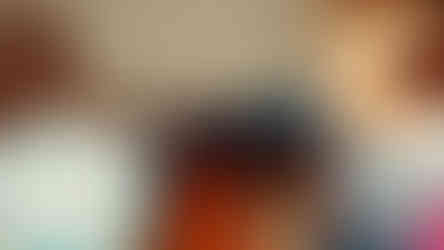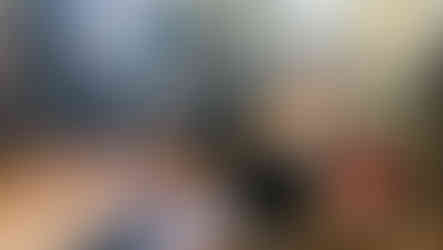Hyper Active
- Cory Reeder

- Jul 25, 2020
- 5 min read
Updated: Jul 31, 2020
All his life Cory knew he was different, it just took him a little longer to figure out why. As he faces his recent adult ADHD diagnosis, he embarks on a quest to learn how several friends with disabilities continue to cope and how their journeys might impact his own. The film features several poignant sequences of introspection, immersive cinematography and editing as well as lively conversations with featured guests including actress/ educator/ PWD activist Diana Elizabeth Jordan, screenwriter Marc Muszynski, model/ actress Natalie Oden and ADHD advocate Kamden Hainsworth.

In “Hyper Active,” Cory Reeder fuses his considerable talents to depict the raw and passionate nature of his daily life. His is a complex journey through the ups and downs of his struggle to embrace his recent ADHD diagnosis. The film was produced for the 2020 Easterseals Disability Film Challenge by Stephanie Lincoln and Allison Gray. Reeder’s behind-the-scenes team also included cinematographer John Calabrese and award-winning editor Nathan Cox. The music is original for the film created by Larson Schneider and sound mix provided by Jae Kim.
FROM THE FILM
DIRECTORS STATEMENT
For the past five years in April, I've looked forward to participating in the Easterseals Disability Film Challenge. This year, COVID-19 and quarantine almost claimed the event as another victim. Luckily event founder Nic Novicki and sponsor Easterseals of Southern California devised a plan for this year's event to take place a few months later, requiring people to film at home while socially distant and challenging filmmakers to produce a documentary.
In all my years of participation, I've always prided myself on what our team has been able to accomplish. We created five films, seven nominations and three wins for films that elevated actors with Down syndrome, cerebral palsy, paralysis, autism and dwarfism. Overall, my biggest joy has been befriending actor/ director/ activist Diana Elizabeth Jordan so that she could direct her first film, I CAN which was nominated in last year's Disability Film Challenge for both Best Film and Best Director.
But this year, faced with the task of making a documentary at home, without the ability to feature a person with a disability, doubt crept in and I considered skipping the event. The idea of inviting anyone into my apartment to film seemed too risky. People with disabilities (PWD) are far more susceptible to COVID-19 because many of them already have compromised immune systems. So I was ready to give up.
With the deadline approaching, I couldn't deny how emotionally wrecked I felt about not participating. So…with a sobering look in the mirror, I thought of the one thing I could talk about, a diagnosis I received eight months ago. Something that filled me with fear to discuss beyond close circles because of how it could affect my filmmaking career. I was diagnosed with adult ADHD.
I am terrified of making this documentary. Will this make me look weak, unreliable, unhireable? Feature filmmaking has always been my dream, could this ruin my chance? How can I possibly identify as having a disability when so many people I know, love and work with have much more complicated or debiting disabilities than mine? What would they think about my diagnosis? I was afraid to be judged by them. I felt guilty for being diagnosed in the middle of my life with something that's usually spotted and dealt with in kids. I was ashamed that my parents didn't catch this when I was young and that I wasn't smart enough to find out until now.
To me, a great documentary must be fearless and honest. If I was going to put my truth on screen I'd have to accept that I'd be exposing myself to others' perceptions, showcasing my fears and revealing my secret vulnerability. Would it be worth it?
In quarantine, I had happened to be binge-watching the show DAVE on Hulu and later saw an interview with Dave's co-star and real-life hype-man GaTa. In episode 5, GaTa reveals that he's bipolar, as he is in real life. He almost didn't let producers write the episode, but then his mom and sister suggested he see this as an opportunity to show that it's ok to be a black man and bipolar. That you can be successful and have a mental disorder. Hearing that was what I needed to take the plunge.
I started setting up interviews via Zoom. I wanted to talk to someone with ADHD about ADHD. I wanted to talk to my PWD friends and understand emotions around their personal diagnosis. I wanted to learn how can I see my diagnosis as a benefit, rather than an obstacle. How to discuss having an invisible disability. I want to become aware of obstacles that may exist, mistakes I can avoid and discriminations that I may face.
For the film's centerpiece, I wanted to show what my ADHD looks like. It's one thing for me to describe it, it's another to see how complex and fast thoughts whiz by. To do this I needed a montage of sight and sound that had style and finesse, so I turned to my editing mentor Nathan Cox. Nathan's collaborations with director Mark Pellington have earned him awards and nominations for videos with Pearl Jam, Foo Fighters and U2. Nathan excels in telling story and emotion with quick clips stitched with sophisticated narrative threads. With him on board, I collected home movies, scanned images, shot b-roll on iPhone, DSLR and RED cameras.
The rest of the film came together with COVID-19 CDC protocols in place. Producers Stephanie Lincoln and Allison Gray worked from home to prepare for the shoot. On our interview day, we all gathered wearing PPE, except for me when I had to be on camera. It was a production filled with all the rushes of adrenaline and excitement I have always loved. There was one thing I hadn't factored, the new and emotional toll of being on-camera as the subject of the film.
I tried more than once to quit the project. There was too much fear, too many secrets were being told - I didn't feel ready. But in those moments of crisis, there would follow whispers of grace. A call from my dear friend Diana Elizabeth Jordan, a sample of the rhythmic score from Larson Schneider, a clip of the montage from Nathan, a kiss from my wife telling me, "how brave you are for being this vulnerable."
This film may be about me, but want you to know I did not do this alone. I was surrounded, socially distant, by an amazing group of friends and professionals who volunteered their time, and lifted me up so I could be open and honest as I claim my disability.
QUARANTINE BEHIND THE SCENES
PRESS:
CAST:
CREW:
Allison Gray, Producer, Publicity - IMDB
Jae Kim, Sound Mixer - site - IMDB
Dylan Chant, production asst.





























































Commentaires